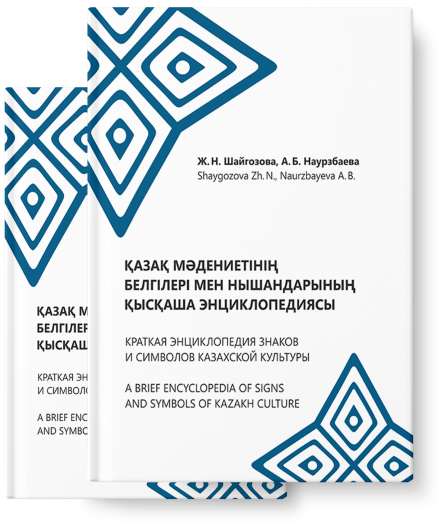
A short encyclopedia of
Signs and symbols of
Kazakh culture

Interesting from the point of view of semiotics “ūran” (battle cry). According to experts, its main purpose is to signal attacks (a sign of readiness for battle) and to alert allies. The use of ūran cry among Turko-Mongolian peoples goes far beyond the above positions: it was called during various rites and rituals closely connected with ancestor worship (calling the tribe’s guardian spirit); during the hunting season; during various competitions, ceremonies of the wedding cycle. A.K. Kushkumbayev [7], referring to Babur, writes that during the war the Turks used two words of ūran: one person speaks one word at the meeting, the second must continue. M. G. Rabinovich divides ūran into three main groups: ūran associated with the religious cult of the patrimony, the totem, the revered place (hill or mountain), and the human ancestor or current head [8, p. 307]. Most likely,the battle cry goes back to earlier forms of beeping – hunting calls. The peculiarity of hunting presupposed the use of conditional signs, a kind of password, usually the cry of a bird. Among the Kazakhs there was a national ūran – “Alash”, which scientists call the equivalent of the people’s self-name (alashtyn azamaty – qazaq). Each Kazakh clan, in turn, had its own ūran: Naimans – Qatağai, Qara-Kerei – Qabanbai, Sadyr – Aldiyar, Qypshaq – Oibas, etc. All the ūrans contain the names of known batyrs or ancestors. Kazakh khans and sultans (genus töre) used the ūran “Arqar” (wild mountain ram), which other genera could not use.
The semiotic battle cry is considered a code word that conveys the call for unity and unity and also serves as a sign of identity and a call to ancestor veneration

